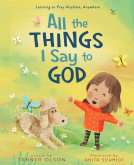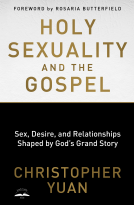
First and Second Corinthians
by John Proctor
This title was previously available on NetGalley and is now archived.
Send NetGalley books directly to your Kindle or Kindle app
1
To read on a Kindle or Kindle app, please add kindle@netgalley.com as an approved email address to receive files in your Amazon account. Click here for step-by-step instructions.
2
Also find your Kindle email address within your Amazon account, and enter it here.
Pub Date Mar 13 2015 | Archive Date Sep 13 2015
Description
Books in the Westminster Bible Companion series assist leaders and students in their study of the Bible as a guide to Christian faith and practice. Each volume presents the text under discussion, explains the biblical book in its original historical context, and explores the text's significance for faithful living today. These books are ideal resources for preparing text-based sermons and a worthy addition to seminary courses and advanced Bible study groups.
In this volume, John Proctor provides an accessible study on First and Second Corinthians. Paul's first letter to the Corinthians addresses the basic components of human life, such as leadership, marriage, hospitality, and bereavement. The second letter mostly revolves around the pains and joys of a pastoral relationship. Proctor's volume provides insightful commentary that examines how the letters spoke to the people of Corinth and how they are received today.
Available Editions
| EDITION | Other Format |
| ISBN | 9780664252625 |
| PRICE | $36.00 (USD) |
Average rating from 7 members
Featured Reviews
 Conrade Y, Reviewer
Conrade Y, Reviewer
There is always a special need for commentaries that laypersons, especially teachers of Bible classes need. Not many people have the time and money to go through intense seminary education or Bible training. Without a proper guide, it is easy to let subjective opinions on Bible passages lead the way. This is not good for students. It is also not good for the Church. Without oversimplifying things, Churches still need Bible resources that are easy to refer to but also dependable and faithful to the biblical contexts. Using the New Revised Standard Version Bible, the two letters written by Paul to the Corinthian Church are examined in this book and presented to the public for easy reference and reading. The usual stuff is there. There is the overall map of the region the Apostle Paul writes to. There is the introductory material to give readers a short description of the contexts, the theological themes, the major issues of the day, the authorship and audience, and the unique place of Corinth. This is followed by a map to outline how the letter develops.
A) Overall Summary The two letters of Paul are not only described in themselves, they are also contrasted with each other to highlight the same author but different emotional conditions. While the former is one of firmness, the latter reflects a brokenness. This can be seen as a metaphor for Christian ministry. There are ups and downs, good times and bad, pleasant moments and unpleasant circumstances. It is all part and parcel of the work. In expressing these in letter format, we learn about how human Paul is and how much the gospel plays in his own life and teaching. In it, he is not only a theologian and a pastor, but also a pilgrim and friend.
Calling it one of the easiest of Paul's letters to outline, First Corinthians is mapped according to three major "People" sections. They are:
One Corinthians 1-4 (People of the Cross: Challenge)
One Corinthians 5-14 (People of Corinth: Guidance)
One Corinthians 15-16 (People of the Resurrection: Hope)
Some of the major issues include the arguments surrounding the status of Jews and Gentiles; the controversies over Gnostic beliefs that divide bodies and souls; gender controversies; infighting and politicking; and others.
In contrast to Paul's confident and bold teachings in First Corinthians, Second Corinthians presents a very personal and vulnerable side. Five key issues dominate the letter.
Paul's difficulty with the leadership in the Church Monetary gifts for ministry Tithes and Teamwork Heresy Paul's Return
Second Corinthians is mapped accordingly:
Second Corinthians 1-7 (Call to Trust Relationship)
Second Corinthians 8-9 (Collection for the Saints)
Second Corinthians 10-13 (Challenge to the Corinthian Church)
B) Structure and Style
Each passage are first printed out in full, usually bold, before Proctor offers his interpretation and comments on it. With clear title headings, bold prints and clear references, readers can use the volume as a convenient resource to zoom into any passages or texts when needed. Sometimes, the commentary reads like a sermon in which the author attempts to strike a mental conversation with the reader. The descriptions are relatively brief and to the point, without theological jargon or much Greek grammatical references. With a systematic point by point structure, it is very easy to follow Proctor's arguments.
Structure wise, this book follows the passage by passage format instead of the conventional verse by verse manner. This not only saves space but allows the author to summarize the whole passage in his own way. This frees him from being stuck at a verse by verse method that can sometimes appear disjointed. That said, the chosen pericope can be a limitation itself, so readers will benefit if they read the actual Biblical texts prior to referring to this commentary.
The copy I had has a distinct lack of cross references to other scholarship material and theological resources for further research. Perhaps, these will be included in the final version but readers will need to find out for themselves. Proctor does a good job in training readers how to stay with the text and not be too quick to walk away from it. He reminds readers to see from two angles. The first angle is how the Corinthians would read the letter and the second is what it means for us in our modern era. Believing the Bible speaks to us today, Proctor provides challenges to both our vertical relationships to God as well as our horizontal relationships to one another. He brings in references to historical creeds. He uses imagery brilliantly when he talks about leadership matters in the Church, that leadership is like being farmers and gardeners who take care of the land and garden without lording over them. It requires the virtues of patience, perseverance, and passion. Paul's openness is made bare often and this commentary pays special attention to Paul not only as a theologian but more so as a pastor.
All in all, this is a passable commentary and should appeal to Bible study leaders and Sunday school teachers. For preachers, I would recommend other supplementary material especially those that do more exegesis.
Rating: 4 stars of 5.
conrade This book is provided to me courtesy of Westminster John Knox Press and NetGalley in exchange for an honest review. All opinions offered above are mine unless otherwise stated or implied.


















